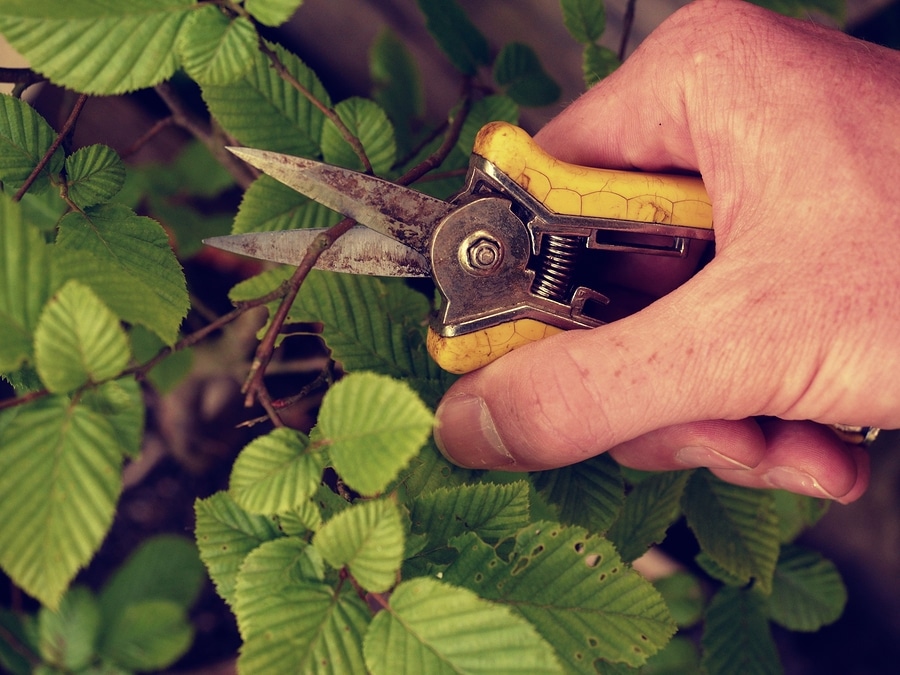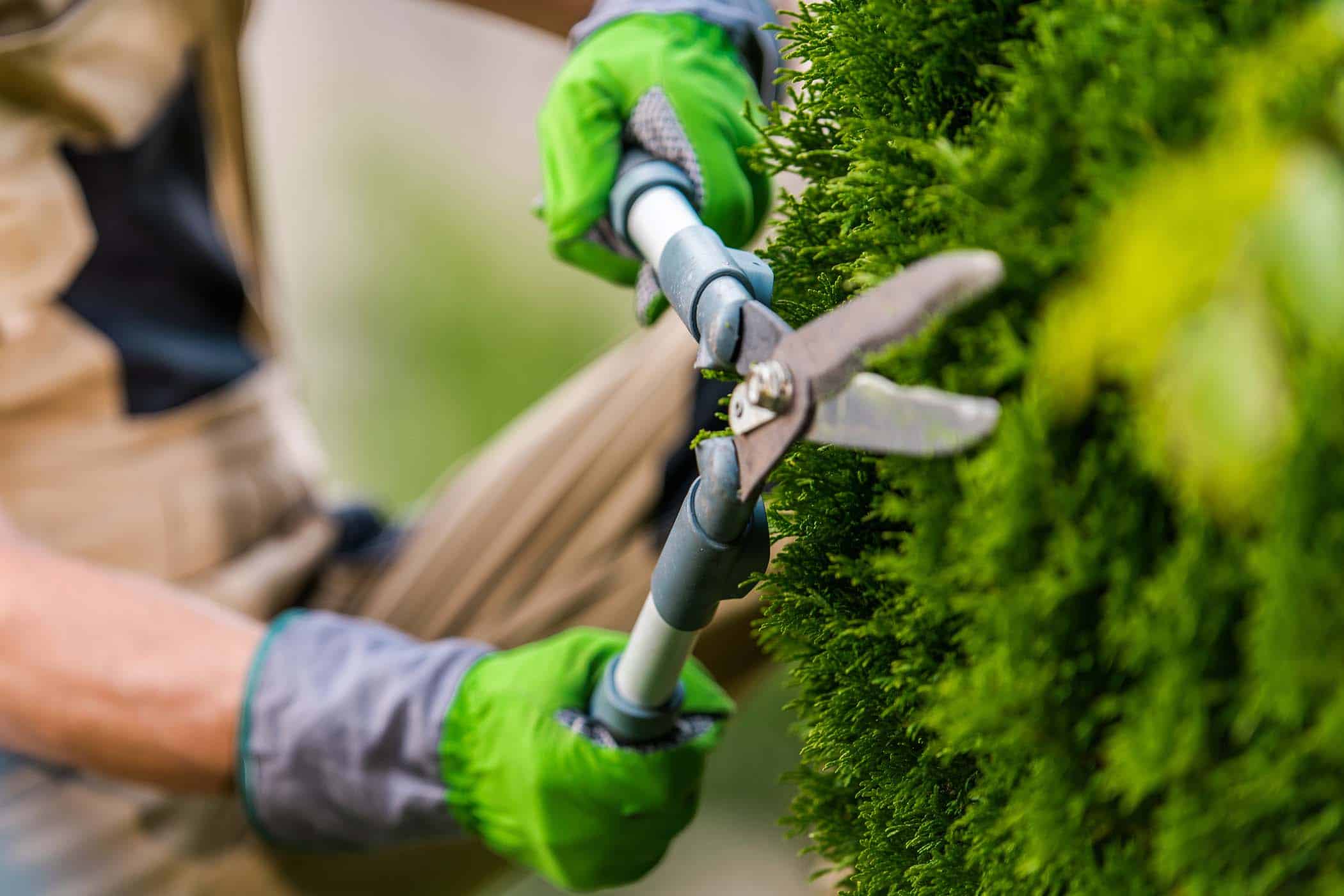Tree trimming is an important component of arboriculture and landscape management, as it ensures the health, safety, and aesthetic appeal of trees. It entails carefully and selectively removing branches, foliage, and roots to improve the tree’s structure, health, and intended shape. This article looks into what does trim the tree mean, examining its benefits, methods, and best practices to provide a comprehensive grasp of what it means to trim a tree.
What does trimming the tree mean?
Benefits of Tree Trimming: Health Improvement
Tree trimming is important because it improves the overall health of the tree. By eliminating dead, diseased, or damaged branches, we can prevent infections and pests from spreading. Trimming also promotes greater air circulation and sunshine penetration, and is essential for photosynthesis and general tree health.
Safety considerations

Safety is another important consideration while pruning trees. Overgrown branches can offer serious hazards, particularly during storms or heavy winds. Trimming back these potentially hazardous limbs decreases the risk of branches falling and inflicting injury or property damage.
Aesthetic enhancement
Tree trimming is critical for preserving the visual appeal of individual trees and the surrounding landscape. Properly maintained trees improve the visual harmony of a garden or park, adding to the overall beauty and value of the land.
Growth Control and Clearance
Regular trimming helps to maintain tree growth and size, ensuring that they do not interfere with power lines, buildings, or other structures. This preventive strategy helps to avoid potential disruptions and costly damages.
Types of tree trimming
Crown Thinning
Crown thinning is the selective removal of branches to lessen the density of the tree’s canopy. This technique allows more light to enter the tree and promotes air circulation, promoting healthier growth and lowering the risk of illness.
Crown Raising
Crown raising involves cutting a tree’s lower branches to make room for pedestrians, vehicles, and structures. This strategy is particularly beneficial for urban trees and those in public areas.
Crown Reduction
Crown reduction is reducing the total size of a tree’s canopy. People commonly use this procedure when a tree has grown too large for its location or poses a threat to surrounding structures.
Deadwooding
Deadwooding is the process of removing dead, dying, or diseased branches. This procedure improves the tree’s appearance and decreases the chance of branches falling and decay spreading.
Best Practices in Tree Trimming
Timing and frequency
Understanding the ideal timing and frequency for tree cutting is critical. The best time to trim most trees is during the dormant season, from late winter to early spring. This timing reduces stress and promotes rapid growth in the next season. However, certain species and conditions may necessitate different timing.
Proper techniques
Using the proper techniques is critical to ensuring effective and safe trimming. Here are a few crucial practices:
Three-cut method: To remove a branch, the three-cut method involves making three incisions. The first cut is an undercut a few inches from the branch collar, then a second cut a few inches further out to remove the bulk of the branch, and finally, a cut close to the trunk to remove the remaining stub without harming the tree.
Avoid Topping: Tree topping, or chopping back huge branches to stubs, is detrimental and can cause decay, poor regrowth, and overall decline. Instead, use crown reduction techniques to manage size.
Clean Tools: Keeping all tools clean and sharp avoids the spread of illnesses, results in cleaner cuts, and facilitates faster recovery.
Hiring Professionals
While homeowners can complete specific tree-pruning jobs, many situations require the skills of a professional arborist. Arborists have the necessary training, experience, and equipment to complete complicated pruning operations safely and successfully.
Common tree-trimming tools
Pruning Shear
Pruning shears are necessary for removing tiny branches and stems. They exist in two varieties: bypass and anvil. Bypass shears are best for living branches, whereas anvil shears work better for deadwood.
Loppers
Loppers have longer handles than pruning shears, which provides more leverage while cutting thicker branches. They’re especially effective for medium-sized branches.
Pruning Saw
Pruning saws are required for thicker branches that are too thick for shears or loppers. These saws are available in various forms, including folding cutting tools and pole saws for high branches.
Chainsaws
Chainsaws are essential for large-scale tree-pruning operations. They can handle enormous branches and trunks, but use them with caution.
Protective equipment
Tree trimming safety precautions include using personal protective equipment (PPE).
When cutting trees, wearing proper personal protective equipment (PPE) is critical. This includes gloves, safety glasses, hard hats, and protective clothes to keep you safe from falling branches and sharp tools.
Safe Climbing Practices
Working on tall trees requires safe climbing techniques. Use strong ladders or climbing harnesses; never climb with cutting instruments in hand. Always keep tools secure to prevent accidental drops.
Awareness of the surroundings
Maintaining awareness of your surroundings helps you avoid mishaps. Be aware of electrical wires, structures, and other nearby people. Before you begin, clear the work zone of any obstructions or risks.
Related Posts:
Environmental considerations
Wildlife Protection
Consider wildlife conservation when trimming trees. Do not trim during nesting seasons to avoid disturbing birds and other animals. Before you begin work, inspect the trees for nests or habitats.
Waste Management
After pruning, proper trash management is required. You can chip branches and leaves for mulch, compost them, or dispose of them according to local regulations. Recycling green garbage is a sustainable solution that helps the environment.
FAQS
How is tree trimming different from tree pruning?
Although people often use tree trimming and pruning interchangeably, they serve different purposes. The primary goal of tree pruning is to improve aesthetics and remove overgrown branches that could pose a safety risk. On the other hand, tree pruning aims to improve the tree’s health by removing dead, diseased, or structurally unsound branches.
Can trimming damage a tree?
When done correctly, trimming is beneficial to trees. However, inappropriate trimming practices, such as over-trimming or topping, can damage a tree by making it susceptible to disease, pests, and structural weakness. Use suitable methods and instructions to avoid injuring the tree.
What is the cost of professional tree trimming?
The cost of professional tree trimming varies depending on the tree’s size, location, and scope of work required. On average, homeowners may expect to pay between $200 and $800 for each tree. Larger or more sophisticated jobs may incur more costs. To ensure fair pricing, it is best to obtain numerous quotes from certified arborists.
How can I determine whether to remove a branch?
Branches that require removal typically exhibit the following signals:
Dry, brittle branches that lack leaves.
Discolored, spotted, or swollen branches.
Branch cracks or splits are a structural vulnerability.
Branches that rub against each other, structures, or power lines.
What are the environmental benefits of tree trimming?
Tree trimming provides various environmental benefits:
Healthy trees promote strong growth and longevity.
Well-trimmed trees can provide shade in the summer while allowing sunshine in the winter, lowering energy expenses.
Healthy trees help clean the air by absorbing toxins and creating oxygen.
Properly managed trees contribute to different ecosystems by providing habitat for various species.
Conclusion
Trimming a tree is essential for maintaining its health, safety, and aesthetic appeal. Tree pruning contributes to the health and beauty of any landscape by removing dead or diseased branches, promoting air circulation, and regulating growth. Regular trimming also reduces the risks posed by overgrown branches, saving people and property. For the best results and safety, consider hiring experienced arborists with the necessary skills and equipment. Proper tree maintenance is an investment in your tree’s life and health. Cinchoranch Arborist will guide you on what does trim the tree mean.

